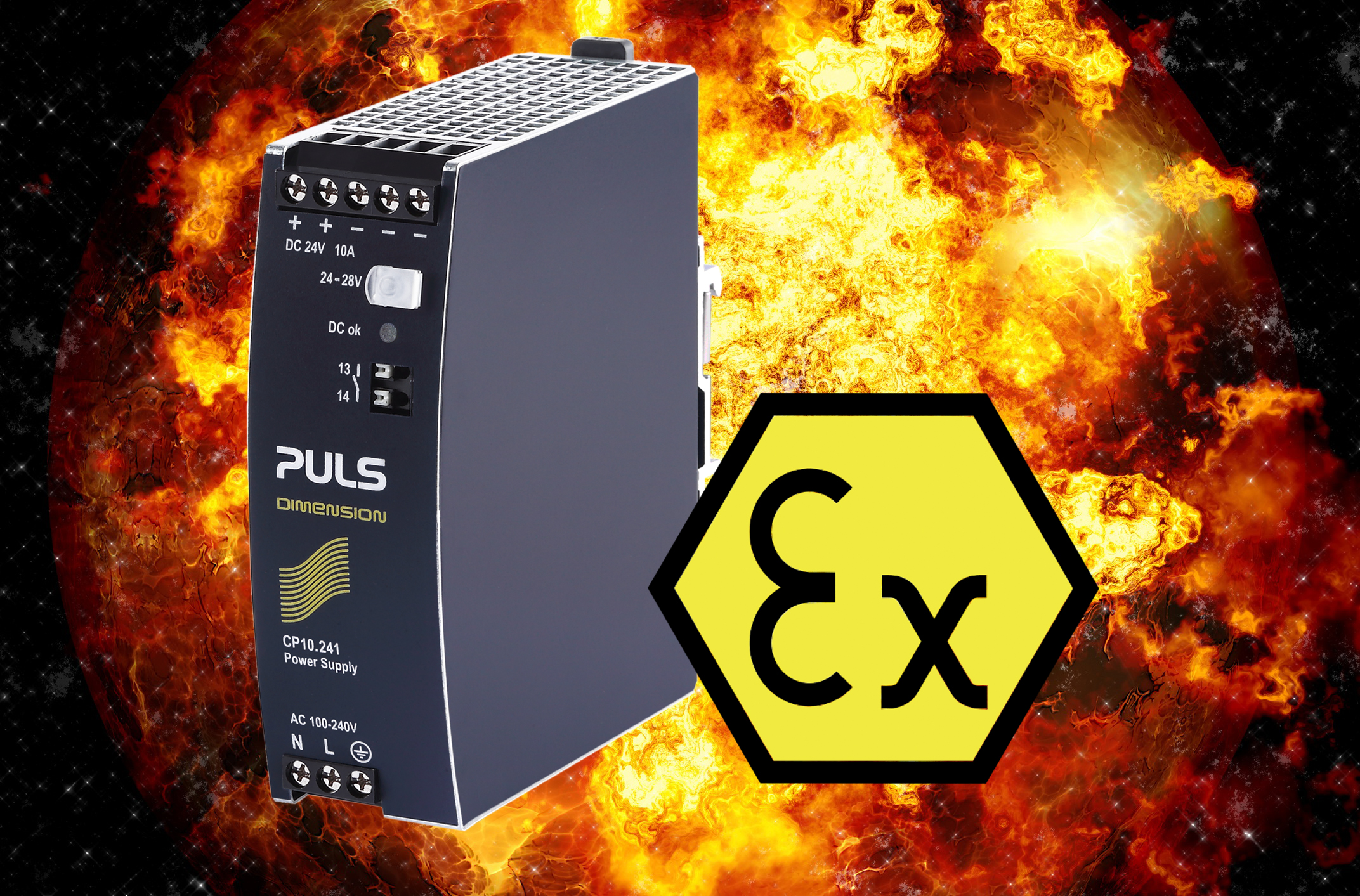Don’t ever compromises on supplies for ATEX systems
The standard for equipment used in explosive atmospheres is more than a logo on a datasheet, warns Marco van der Linden, UK country manager for PULS Power
DIN-rail power supplies are found in almost every industrial process control system. They may be required to provide power to electronic controls, relays and contactors, for power over Ethernet (PoE) communication systems or for motor drives. During the conversion from AC mains to lower DC power outputs, switch mode power supplies (SMPS) produce high voltages and currents that, if incorrectly designed, may cause sparks and may also generate excess heat through inefficient design topologies being used.
Certification of equipment and protective systems for use in hazardous areas has been in force for many years and there is a well-established supply chain for electrical equipment designed to meet the regulatory requirements.
Workplaces at risk
Hazardous areas in the workplace are mainly the result of explosive atmospheres which can be caused by flammable gases, mists or vapours or by combustible dusts. If enough of a substance is mixed with air, a source of ignition is likely to cause an explosion resulting in damage, potential injury and, in the worst-case possible scenario, loss of life.
Many workplaces may contain, or have activities that produce explosive, or potentially explosive, atmospheres. Examples are where work activities create or release flammable gases or vapours, such as vehicle paint spraying, or workplaces where fine organic dusts such as grain, flour or wood are handled or processed.
Preventing the creation of explosive atmospheres and eliminating sources of ignition are the two main ways of reducing risk. Ensuring the correct equipment is installed in the system can help greatly in this. There is a duty placed on employers in the Dangerous Substances and Explosive Atmospheres Regulations 2002 to eliminate or control the risks from explosive atmospheres in the workplace.
The ATEX directive
Introduced in 2003, the ATEX directive covers both electrical and mechanical equipment and is mandatory for any equipment to be used in hazardous areas throughout the European Union. Electrical equipment requires independent certification for use in a Zone 1 area and most electrical equipment manufacturers also provide additional certification for Zone 2 products.

Figure 1: The CP10.241 DIN-rail power supplies for single-phase systems
IECEx is a further worldwide certification system for electrical products and requires full compliance to IEC International standards. Equipment manufacturers must have been awarded an IECEx Certificate of Conformity by an approved IECEx notified body. The certificate covers the manufacturing facility and its quality assurance processes in addition to approval of the end product. Once approval has been granted, the manufacturers’ certificate of conformity is available to view on the IECEx website.
Products from reputable manufacturers would be expected to supply products certified to both schemes.
ATEX for power supplies
To meet ATEX regulations, power supplies must be designed with larger creepage and clearance distances on the PCB than may be normal, this provides over surface and through air protection against conduction or sparks. Outputs must be protected from overload and overcurrent to prevent the possibility of damage to the end system causing temperature increases or fire. Internal components should be placed to ensure cool running and reduce internal self-heating. Conformal coating may be required on the PCB not only to protect against application atmosphere but also increase resistance to shock and vibration.
Selecting any power supply with ATEX approval may seem to be a simple solution to this situation. However, a number of other design considerations may have a great impact on cost of ownership, loss of output and system life expectancy.
There is constant pressure to reduce control panel size, a problem often made worse by conservative designers over-specifying the power supply “just in case” extra power might be occasionally required. It is possible to source very compact DIN-rail power supplies with the ability to respond to momentary high currents without having permanent extra capacity taking up valuable space and wasting energy.
Power supply efficiency is a key requirement for minimising heat generated in the control panel, which is not only a potential hazard but also impacts on both the lifetime of the power supply itself and other components in the system. Internal temperatures are directly related to system reliability and lifetime and must be regulated. Low efficiency power supplies will increase system cooling requirements, further, reducing reliability. Power supplies with a wide operating temperature range and which are convection cooled will offer significant benefits to system integrity.
PULS Power is the only company worldwide focused entirely on the development and production of DIN-rail power supplies. It manufactures a range of ATEX- approved power supplies and accessories which are tested according to EN 60079-0 and EN 60079-15 and comply with the ATEX Directive (Class I Div 2, IECEx, ATEX). These devices may be used in systems in potentially explosive atmospheres of zone 2, category 3G.


